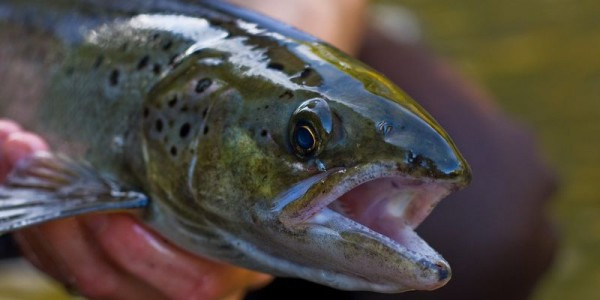Clyde River Salmon Restoration
History
The Landlocked Salmon fishery in the Clyde River and Lake Memphremagog was once renowned for the size and quantity of fish that ascended the river twice each year. Anglers from around the world flocked to Newport each spring and fall for a chance at catching one of the prized fish. Unfortunately, it did not last.
It is unclear exactly what caused the demise of the fishery. A combination of many different factors is likely to blame. It is generally accepted that the “last straw” was the construction of the #11 diversion dam in 1957. The dam diverted water from nearly a mile of river, effectively blocking access to the salmon’s spawning grounds. While anecdotal evidence suggests that the fishery had already been significantly depleted by that time, the dam nonetheless became the scapegoat for the fishery’s problems.
The fishery was able to hang on through the following decades, thanks in large part to significant, albeit inconsistent, stocking efforts by the Vermont Fish and Wildlife Department. Then, in 1994, heavy spring runoff breached the #11 dam. Luckily, since this happened in the midst of federal relicensing of the facilities, repairs were halted and the dam was eventually ordered to be removed. This marked the first time that the Federal Energy Regulatory Commission (FERC) had ordered the removal of a dam for environmental reasons against the wishes of the owner.
As a condition of relicensing the Newport facilities, upstream and downstream fish passage facilities have been constructed at the #1,2,3 powerhouse and dam. For the first time in more than a century fish from Lake Memphremagog can access the stretch of river from Derby to West Charleston.
The fishery has been slow to recover, but it is once again attracting anglers from throughout Vermont and beyond.
History of Dams on the Clyde
early 1800s – Mill dam constructed at Arnolds Falls
1883 – Dam constructed on outlet of Lake Memphremagog
1918 – Newport Dam(Clyde Pond) constructed
1928 – West Charleston Dam constructed
1929 – Pensioner Pond Dam constructed
1957 – #11 Dam constructed
1994 – #11 Dam breached
1996 – #11 Dam removed
2007 – fish passage in place at Newport Dam
Salmon numbers per year using the fish-way to enter the upper Clyde River
2007 – 55
2008 – 19
2009 – 8
2010 – 16
2011 – 76
2012 – 136
2013 – 105
2014 – 71
2015 – 204
2016 – 30
Since the construction of the fish ladder at the #1,2,3 power plant in 2007, historically the VTFWCG has assisted the Vermont Fish & Wildlife with its trap and truck program on the Clyde River. The success of this enterprise is heavily dependent on the cooperation of Mother Nature and her control of water levels and temperatures. 2016 was a poor season for the upstream passage due to such low water conditions. By the time the water levels and temperatures were adequate for upstream migration fish had already spawned out. This year came on the heels of the best year when the 136 adult salmon were processed and trucked to the upper river to spawn. The success of this program would open up approximately 6 river miles of additional spawning habitat.
To see more on the Clyde River salmon, watch this video: https://vimeo.com/769246955
